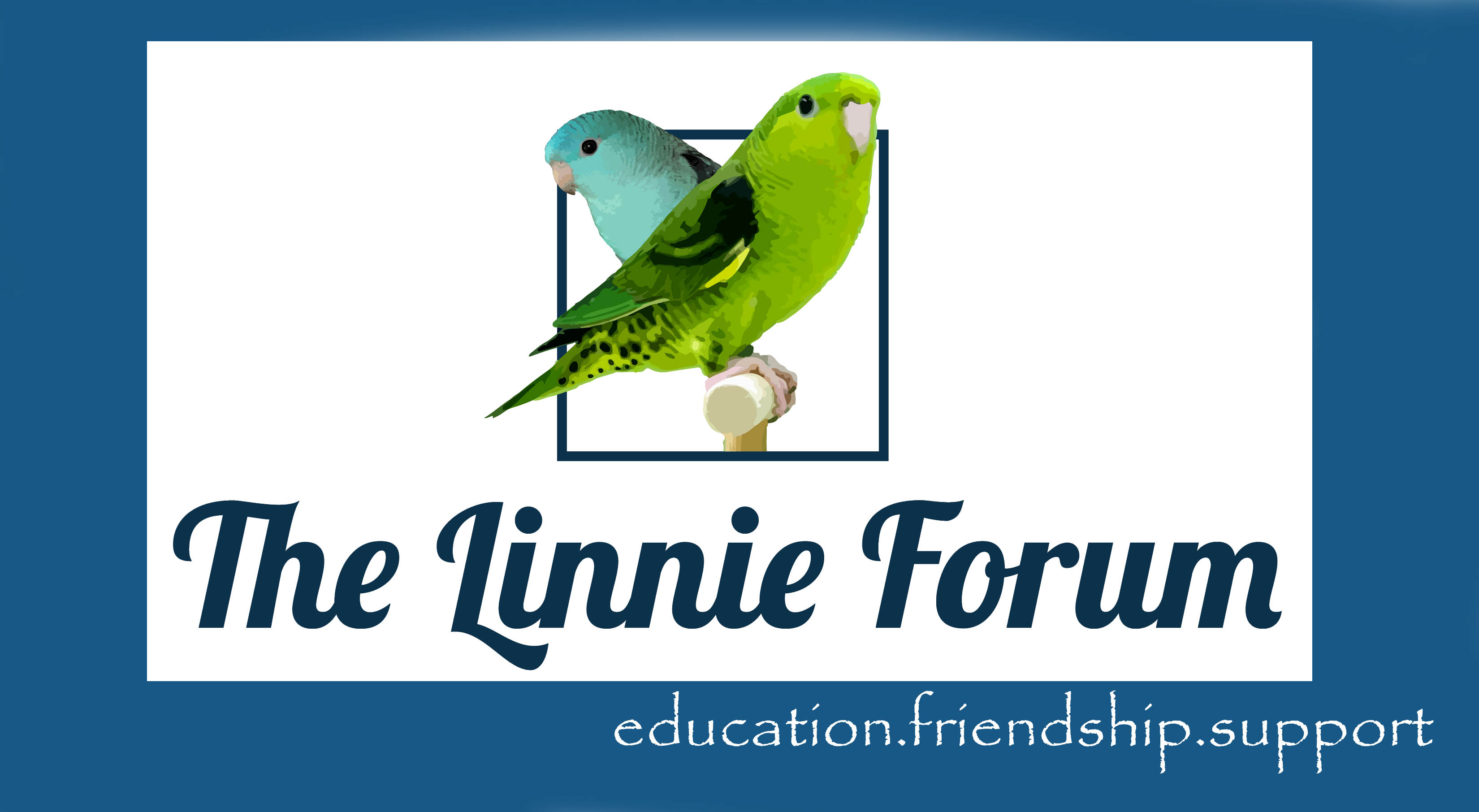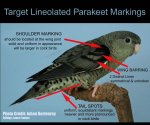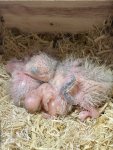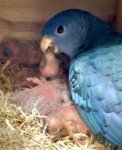Chris103
Incubating
Hi everyone! Been lurking around for a while and
Just wanted to share some photos of my Linnie’s and their first clutch of babies ! I just got the male in January and we already have 4 chicks! I definitely was not expecting them so soon , but I am in no way complaining. Both parents are just over a year old and quite tame, which has made them incredibly calm parents. They’re not at all bothered by my nest inspections , and will feed the chicks while I have the lid popped up to check on them. I don’t check excessively, but I’m keeping an eye out since they’re first time parents. Female is a SF D turquoise (cobalt) , she’s possibly a SF violet factor as well, but I don’t know violet well enough in Linnie’s to be sure of that. If anyone has experience with violets , please chime in with your opinion on her! Male is a green SF greywing split to turquoise and possibly split ino. I know violet factor and greywing isn’t the best pairing for violet offspring, but we all know how hard Linnie’s can be to track down and he checks all the other boxes for an appropriate pairing. Lots of color possibilities for the chicks, especially if the male is split ino, so it’ll be very exciting to see what pops up when they start to feather out . So far I’m not seeing red ino eyes in any of the chicks, but need bigger sample size to determine if he is for sure split ino or not.
Parents are both first time breeders, but I’m very relieved to see they’re being amazing parents so far . The chicks are stuffed full any time I check in on them, and the female is still brooding them most of the day. I’ve raised many bird species over the years but this is my first time keeping and breeding Linnie’s. They are such awesome little birds , I wish I had found them sooner ! I’m hooked now .
I have a few questions If anyone with experience has any insights ….
What is the best age to close band babies ? I’ve heard they need to be banded younger than most species their size, is that accurate?
Second concern.
The oldest chick is 5 days ahead of the youngest that just hatched last night. Do I need to keep an eye on the youngest chick to make sure the siblings aren’t getting all the food? The parents seem to be keeping them all full of food so far, but not sure if that’ll change as they grow and the youngest could get outcompeted. I’m planning to pull chicks for hand feeding at around 16-18 days old, but can always pull the older ones first and leave the younger one with the parents to catch up a bit. I just don’t want to lose any of them!
Lastly , do you guys that breed Linnie’s typically let them have another clutch right after the first , or should I pull the box when I pull babies and give them a short rest? I will definitely pull the box and change light cycle, diet etc after their second clutch of the year to discourage anymore breeding attempts. The parents are in great condition currently, but I’ll reassess them for a round two when I pull the chicks and go from there.
Any advice or tips would be greatly appreciated!
Here’s some pictures of the pair and their chicks! They had 3 nest boxes to choose from , and of course chose the one I didn’t really want them to use . Lesson learned, Next time I’m only giving them the one good box. The box They’re using will work, but a bit smaller than I’d like and goofy entrance hole placement. I have proper boxes on hand now and will be using those exclusively in the future.
. Lesson learned, Next time I’m only giving them the one good box. The box They’re using will work, but a bit smaller than I’d like and goofy entrance hole placement. I have proper boxes on hand now and will be using those exclusively in the future.
View attachment 165
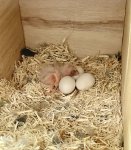
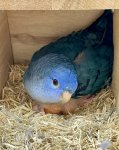
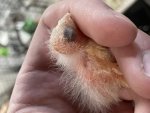
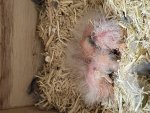 View attachment 165
View attachment 165
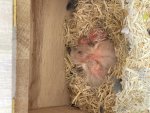



Just wanted to share some photos of my Linnie’s and their first clutch of babies ! I just got the male in January and we already have 4 chicks! I definitely was not expecting them so soon , but I am in no way complaining. Both parents are just over a year old and quite tame, which has made them incredibly calm parents. They’re not at all bothered by my nest inspections , and will feed the chicks while I have the lid popped up to check on them. I don’t check excessively, but I’m keeping an eye out since they’re first time parents. Female is a SF D turquoise (cobalt) , she’s possibly a SF violet factor as well, but I don’t know violet well enough in Linnie’s to be sure of that. If anyone has experience with violets , please chime in with your opinion on her! Male is a green SF greywing split to turquoise and possibly split ino. I know violet factor and greywing isn’t the best pairing for violet offspring, but we all know how hard Linnie’s can be to track down and he checks all the other boxes for an appropriate pairing. Lots of color possibilities for the chicks, especially if the male is split ino, so it’ll be very exciting to see what pops up when they start to feather out . So far I’m not seeing red ino eyes in any of the chicks, but need bigger sample size to determine if he is for sure split ino or not.
Parents are both first time breeders, but I’m very relieved to see they’re being amazing parents so far . The chicks are stuffed full any time I check in on them, and the female is still brooding them most of the day. I’ve raised many bird species over the years but this is my first time keeping and breeding Linnie’s. They are such awesome little birds , I wish I had found them sooner ! I’m hooked now .
I have a few questions If anyone with experience has any insights ….
What is the best age to close band babies ? I’ve heard they need to be banded younger than most species their size, is that accurate?
Second concern.
The oldest chick is 5 days ahead of the youngest that just hatched last night. Do I need to keep an eye on the youngest chick to make sure the siblings aren’t getting all the food? The parents seem to be keeping them all full of food so far, but not sure if that’ll change as they grow and the youngest could get outcompeted. I’m planning to pull chicks for hand feeding at around 16-18 days old, but can always pull the older ones first and leave the younger one with the parents to catch up a bit. I just don’t want to lose any of them!
Lastly , do you guys that breed Linnie’s typically let them have another clutch right after the first , or should I pull the box when I pull babies and give them a short rest? I will definitely pull the box and change light cycle, diet etc after their second clutch of the year to discourage anymore breeding attempts. The parents are in great condition currently, but I’ll reassess them for a round two when I pull the chicks and go from there.
Any advice or tips would be greatly appreciated!
Here’s some pictures of the pair and their chicks! They had 3 nest boxes to choose from , and of course chose the one I didn’t really want them to use
View attachment 165



 View attachment 165
View attachment 165




